Any one here used to have one ?? for those too young to remember they were a 2 way radio that was very popular in the 70's and 80's . In some ways they were the forerunner of the Internet forums of today . All users would have a 'handle' or nick name used to identify themselves much as on forums today , i was known as 'fish' even back in those days my mum was known as 'green eyes' , i never 'met' a 'rubber duck' of the movie fame!
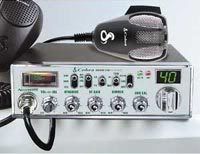
they had 40 channels on basic models channel 14 was universally accepted as the meet up point on the CB and you would use it to see if your mate or anyone you wanted to chat to was monitoring the channel or as we said 'had their ears on' ! once you had contacted then you would suggest a channel to go to to have a chat , if the channel was being used by some one else then you would simply say 'up one' ie meet up a channel . channel 19 was accepted worldwide as the channel for truckers ie the hgv's and using this channel was taboo unless you were talking to a trucker , on this channel truckers would alert other truckers to speed traps or other problem on the roads , again if you wanted to chat an alternative channel would be chosen . channel 9 was for emergencies only and each areas CB club would have dedicated monitors , this channel was used often for all manner of emergencies and then relayed to the BT 999 system for help .

In the early 1970's through to modern times the CB radios operating on the AM frequency were illegal and the whole AM scene was very underground and secretive , all the CB radios were imported from America via the continent . the task of enforcing this law was given to BT who had vans operating with direction finders to find and prosecute offenders , although i never actually knew of anyone who was caught it was a big worry to all operators whether home based or in a car . During those years BT ran an advertising campaign with a character that was a yellow bird that sat on a phone line called BUZBY , do you remember him? he was replaced by the some-what less lovable Bob Hoskins in the 80's .
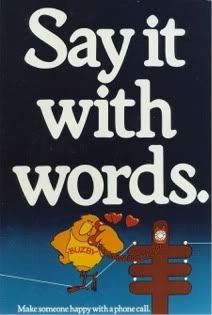
well the nick name for the detector vans on the air became BUZBY after the yellow bird , if BUZBY was seen in an area the call would go out on channel 14 'eyeball eyeball BUZBY' and the air would go quiet for a couple of hours !
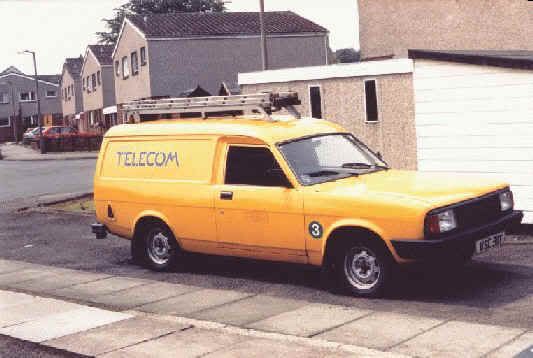
any one who made the call as a prank would be ostracized and on occasion i remember hearing that some teens getting a good pasting and cb's 'confiscated'for persistently making the call .
the mobile cb's ie those in vehicles were believed safer as they could move about but the 'home bases' were thought vulnerable to the BUZBY detector vans , some folk would go to extraordinary lengths to 'protect themselves , it was commonly believed that if the room the CB was in was clad in tin foil it would make it impossible for the detector vans to find! my mother actually did this to her bedroom and then put the then fashionable chip paper over the top!! another method was ta little box called a limiter , this enabled the operator to turn the power down to 1/4 of a watt and so make detection harder , draw back being range too was drastically reduced.
Shrouded in the necessary secrecy a whole vocabulary grew, the American based '10 codes' were used instead of some words 10-1 going to , 10-2 repeat ,10-4 meant yes , 10-10 goodbye 10-100 toilet , 10-200 was a play on 10-100 ie going for a poo! . there were also the less used '13 codes' these were mostly swear words or insults i cant remember many!
The CB radio's mostly transmitted using just 4 watts of energy which as enough to interrupt normal radio and television signals on nearby houses , this was called 'bleed over' , hence most CB activity was conducted at night when the TV had finished (as all 3 channels did back then after the national anthem!)
The distance the CB's could cover was relatively short ie 20 miles or so,some geographical features would get in the way ie big hills and so cause 'dead areas' , And so many mobile cb's would find good vantage points of an evening and chat to people in places they couldn't normally reach.In Salisbury where i lived there was 3 popular places , pepperbox hill ,a high hill off the A36 that afforded range to talk to folk in Southampton and Plymouth ,
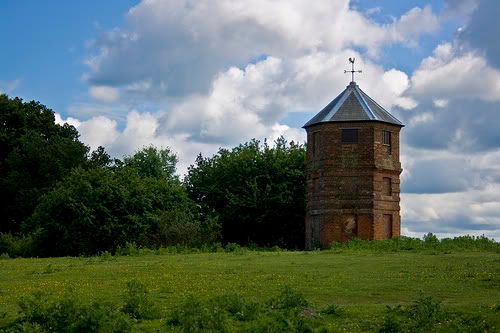
the ski-jump an unfinished road to an unfinished multistory car park that over looked the whole cityand shaftesbury drove which was a very high drovers track that afforded range over blandford and bournemouth area .
most areas had a CB club , our local club was called the 'lighthouse breakers' , the light house was CB slang for Salisbury cathedral as at night its red light on top could be seen for miles.

also the club was a contact point for correspondence or the cards we had made up as calling cards to send to each other , the club had a P.O box for semi anonymous contact.Our calling cards varied and i only wish id kept mine, generally they were the size of a post card ,one side with a picture or design (forerunner of the avatar) and on the other details like channel used , watts used , location , date and brief message.
On occasion very long distance was possible , if the atmospheric conditions ( along with chatter was known as 'skip' ) were right you could chat to people far far away i remember one night mymother talking to a chap in Denmark , the conditions could last 30 seconds or rarely an hour. Usually the conditions happened around September each year , we would sit up into the wee hours listening to conversations of American farmers in their combined harvesters on the great plains .
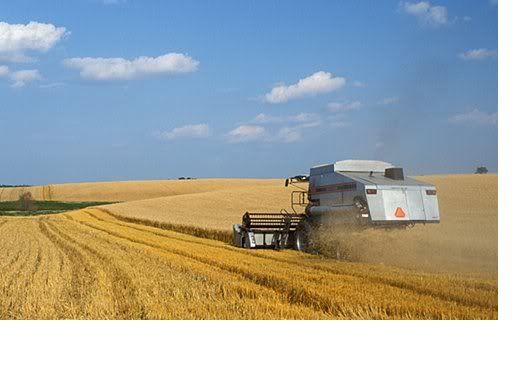
A big change happened in the mid 1980's that was the first nail in the coffin for the CB community , the government under pressure from the ever growing popularity of the CB radio decided to make a legal alternative to the AM band radio , the new FM band , and with it a licence issued by BT available for £5.00 a year from the post office . CB was now open to the masses and FM radios could be bought in the common electronics stores of the time one of which was 'TANDY'. the sense of community lasted for a few years but being open to everyone that could fin a fiver an ever bigger riff raff showed their ugly heads . the clubs went into decline and because of the nonsense many gave up their CB's all together and some returned to the AM band , cheaply too as the market was a flood with unwanted AM 'rigs'.
the final death knoll of the CB was the mobile phone
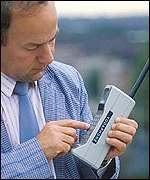
as more cheaper tariffs and smaller phones became available so folk made them their choice. later the Internet forums would take the Cb's place as it was more convenient , had a range of anywhere in the world and was capable of so much more.
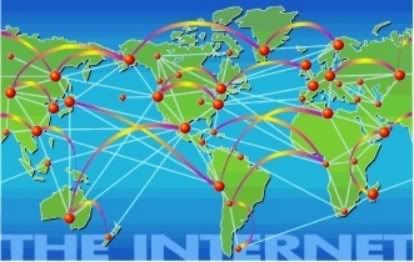
Still today there are a few CB users out there , but turn on any CB am or FM and its like an empty room devoid of furnishings with only memories left of the people .
Often i wonder where the old lighthouse breakers are now , bear , van-man , batman , old mother Bradly , kempy , and so many i cant remember.

they had 40 channels on basic models channel 14 was universally accepted as the meet up point on the CB and you would use it to see if your mate or anyone you wanted to chat to was monitoring the channel or as we said 'had their ears on' ! once you had contacted then you would suggest a channel to go to to have a chat , if the channel was being used by some one else then you would simply say 'up one' ie meet up a channel . channel 19 was accepted worldwide as the channel for truckers ie the hgv's and using this channel was taboo unless you were talking to a trucker , on this channel truckers would alert other truckers to speed traps or other problem on the roads , again if you wanted to chat an alternative channel would be chosen . channel 9 was for emergencies only and each areas CB club would have dedicated monitors , this channel was used often for all manner of emergencies and then relayed to the BT 999 system for help .

In the early 1970's through to modern times the CB radios operating on the AM frequency were illegal and the whole AM scene was very underground and secretive , all the CB radios were imported from America via the continent . the task of enforcing this law was given to BT who had vans operating with direction finders to find and prosecute offenders , although i never actually knew of anyone who was caught it was a big worry to all operators whether home based or in a car . During those years BT ran an advertising campaign with a character that was a yellow bird that sat on a phone line called BUZBY , do you remember him? he was replaced by the some-what less lovable Bob Hoskins in the 80's .

well the nick name for the detector vans on the air became BUZBY after the yellow bird , if BUZBY was seen in an area the call would go out on channel 14 'eyeball eyeball BUZBY' and the air would go quiet for a couple of hours !

any one who made the call as a prank would be ostracized and on occasion i remember hearing that some teens getting a good pasting and cb's 'confiscated'for persistently making the call .
the mobile cb's ie those in vehicles were believed safer as they could move about but the 'home bases' were thought vulnerable to the BUZBY detector vans , some folk would go to extraordinary lengths to 'protect themselves , it was commonly believed that if the room the CB was in was clad in tin foil it would make it impossible for the detector vans to find! my mother actually did this to her bedroom and then put the then fashionable chip paper over the top!! another method was ta little box called a limiter , this enabled the operator to turn the power down to 1/4 of a watt and so make detection harder , draw back being range too was drastically reduced.
Shrouded in the necessary secrecy a whole vocabulary grew, the American based '10 codes' were used instead of some words 10-1 going to , 10-2 repeat ,10-4 meant yes , 10-10 goodbye 10-100 toilet , 10-200 was a play on 10-100 ie going for a poo! . there were also the less used '13 codes' these were mostly swear words or insults i cant remember many!
The CB radio's mostly transmitted using just 4 watts of energy which as enough to interrupt normal radio and television signals on nearby houses , this was called 'bleed over' , hence most CB activity was conducted at night when the TV had finished (as all 3 channels did back then after the national anthem!)
The distance the CB's could cover was relatively short ie 20 miles or so,some geographical features would get in the way ie big hills and so cause 'dead areas' , And so many mobile cb's would find good vantage points of an evening and chat to people in places they couldn't normally reach.In Salisbury where i lived there was 3 popular places , pepperbox hill ,a high hill off the A36 that afforded range to talk to folk in Southampton and Plymouth ,

the ski-jump an unfinished road to an unfinished multistory car park that over looked the whole cityand shaftesbury drove which was a very high drovers track that afforded range over blandford and bournemouth area .
most areas had a CB club , our local club was called the 'lighthouse breakers' , the light house was CB slang for Salisbury cathedral as at night its red light on top could be seen for miles.

also the club was a contact point for correspondence or the cards we had made up as calling cards to send to each other , the club had a P.O box for semi anonymous contact.Our calling cards varied and i only wish id kept mine, generally they were the size of a post card ,one side with a picture or design (forerunner of the avatar) and on the other details like channel used , watts used , location , date and brief message.
On occasion very long distance was possible , if the atmospheric conditions ( along with chatter was known as 'skip' ) were right you could chat to people far far away i remember one night mymother talking to a chap in Denmark , the conditions could last 30 seconds or rarely an hour. Usually the conditions happened around September each year , we would sit up into the wee hours listening to conversations of American farmers in their combined harvesters on the great plains .

A big change happened in the mid 1980's that was the first nail in the coffin for the CB community , the government under pressure from the ever growing popularity of the CB radio decided to make a legal alternative to the AM band radio , the new FM band , and with it a licence issued by BT available for £5.00 a year from the post office . CB was now open to the masses and FM radios could be bought in the common electronics stores of the time one of which was 'TANDY'. the sense of community lasted for a few years but being open to everyone that could fin a fiver an ever bigger riff raff showed their ugly heads . the clubs went into decline and because of the nonsense many gave up their CB's all together and some returned to the AM band , cheaply too as the market was a flood with unwanted AM 'rigs'.
the final death knoll of the CB was the mobile phone

as more cheaper tariffs and smaller phones became available so folk made them their choice. later the Internet forums would take the Cb's place as it was more convenient , had a range of anywhere in the world and was capable of so much more.

Still today there are a few CB users out there , but turn on any CB am or FM and its like an empty room devoid of furnishings with only memories left of the people .
Often i wonder where the old lighthouse breakers are now , bear , van-man , batman , old mother Bradly , kempy , and so many i cant remember.

 there was the discovery that this girl I fancied sometimes used to be on the airwaves using her brother's CB... god only knows how many hours I sat out in the cold, alone in the cloakroom waiting for her to come on. My parents refused point blank to let me drill through my bedroom window to run some coax in!
there was the discovery that this girl I fancied sometimes used to be on the airwaves using her brother's CB... god only knows how many hours I sat out in the cold, alone in the cloakroom waiting for her to come on. My parents refused point blank to let me drill through my bedroom window to run some coax in!